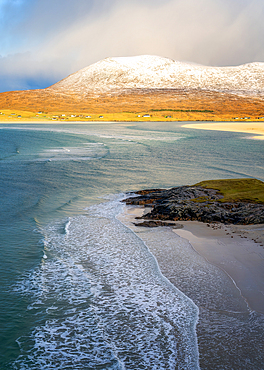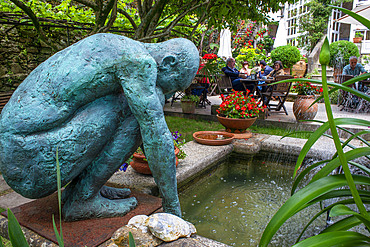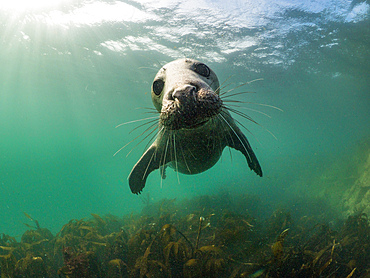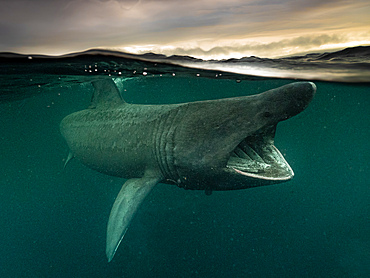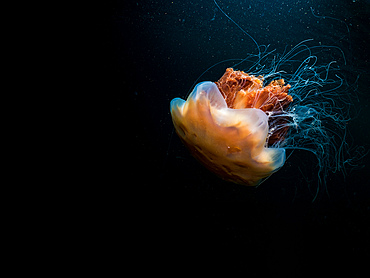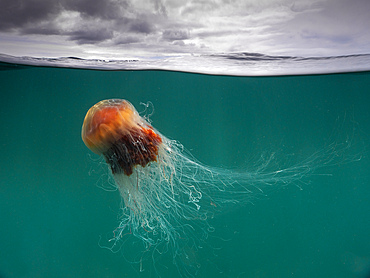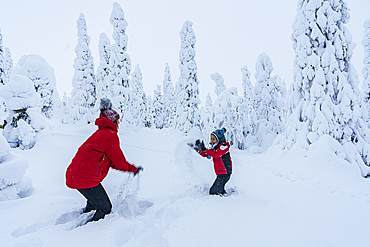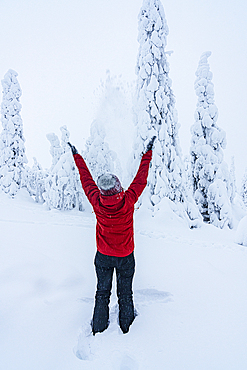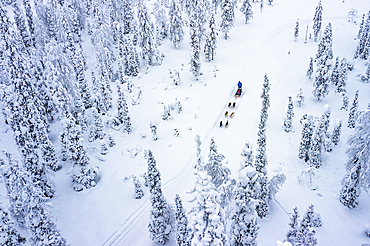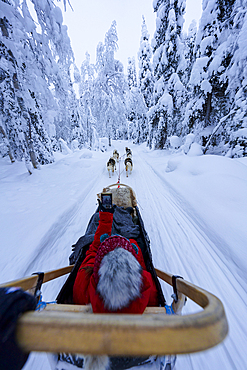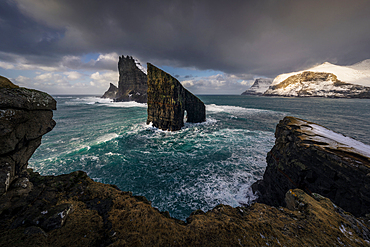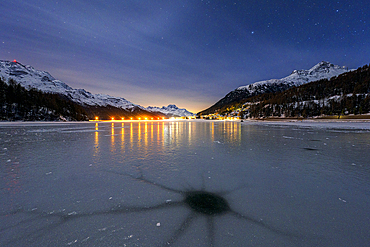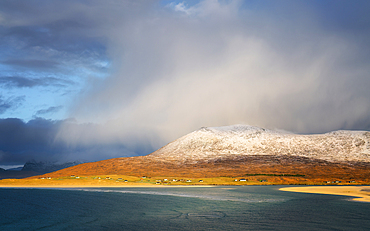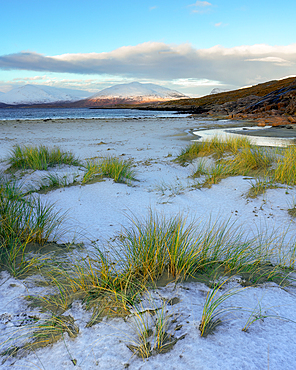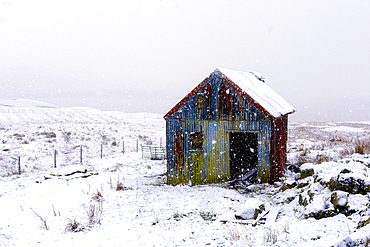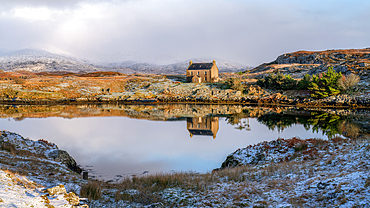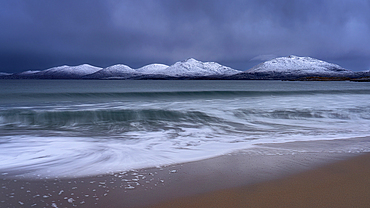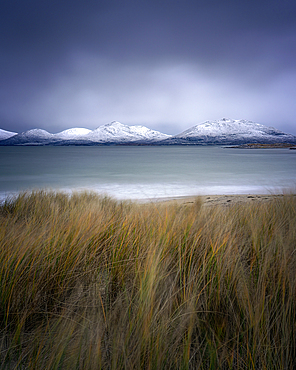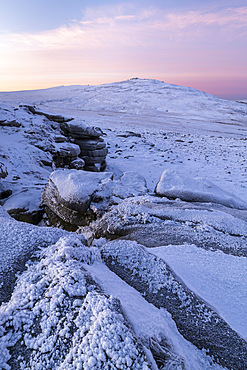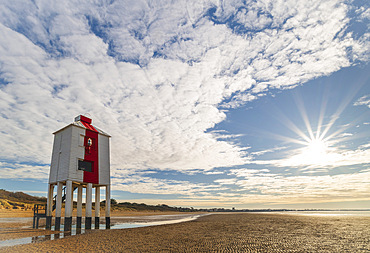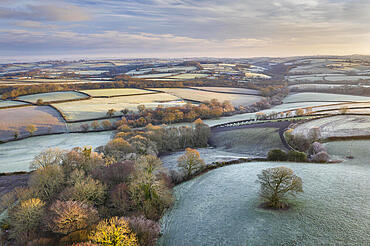Recent searches
Loading...
1361-88 - Man with lantern among snow covered trees enjoying the green lights of the Northern Lights (Aurora Borealis), in the wood, Pallas-Yllastunturi National Park, Muonio, Lapland, Finland, Europe
1361-89 - Huts in the snowy wood under the Northern Lights (Aurora Borealis), Pallas-Yllastunturi National Park, Muonio, Lapland, Finland, Europe
1361-84 - Winter frame of a hut lit by the green Northern Lights (Aurora Borealis) in the icy wood with trees covered with snow, Pallas-Yllastunturi National Park, Muonio, Lapland, Finland, Europe
1361-83 - Typical wooden illuminated hut under the Northern Lights (Aurora Borealis) in the frosty forest with trees covered with snow, Pallas-Yllastunturi National Park, Muonio, Lapland, Finland, Europe
1361-82 - Aerial view of a car driving through the winter forest covered from snow at dawn, Akaslompolo, Kolari, Pallas-Yllastunturi National Park, Lapland region, Finland, Europe
1361-80 - Aerial view of car on icy road and illuminated headlamps driving in the snowcapped forest, at dawn, Akaslompolo, Kolari, Pallas-Yllastunturi National Park, Lapland region, Finland, Europe
1361-79 - Aerial view of a tourist winter resort in the snow covered forest and the frozen lake in Kangos, Pajala, Norrbotten, Norrland, Lapland, Sweden, Scandinavia, Europe
1361-77 - Aerial view of illuminated cottages and bell tower covered with snow in the old village of Gammelstad Church Town at dusk, UNESCO World Heritage Site, Lulea, Norrbotten, Norrland, Sweden, Scandinavia, Europe
1365-114 - Loch Nah Achlaise, Rannoch Moor, Highlands, Scotland, United Kingdom, Europe
1216-684 - View over Bostadh Beach and Luskentyre Beach, Isle of Harris, Outer Hebrides, Scotland, United Kingdom, Europe
1350-6672 - Sculpture, garden and fountain of the Hotel Costa Vella in Santiago de Compostela A Coruña, Spain.
1350-6678 - Strawberry Poison Frog (Dendrobates pumilio), adult, Bastimentos National Park, Bocas del Toro, Panama. The strawberry poison frog or strawberry poison-dart frog (Oophaga pumilio or Dendrobates pumilio) is a species of small amphibian poison dart frog found in Central America. It is common throughout its range, which extends from eastern central Nicaragua through Costa Rica and northwestern Panama. The species is often found in humid lowlands and premontane forest, but large populations are also found in disturbed areas such as plantations. The strawberry poison frog is perhaps most famous for its widespread variation in coloration, comprising approximately 15���30 color morphs, most of which are presumed to be true-breeding. O. pumilio, while not the most poisonous of the dendrobatids, is the most toxic member of its genus. The species is most diverse in Panama with varieties in vivid shades of all red, orange, blue, yellow or green, green and yellow, white with red, orange or black and spotted varieties. The most colorful mix is found in Isla Bastimentos Marine National Park though not all in one place. Colors vary by location. A beach on the north side of the island is named after the species. Two of Southern Explorations' Panama tours visit red frog habitat. Both the eight-day Panama Adventure trip and eleven-day Panama Highlights trip spend time in Isla Bastimentos Marine National Park and the former also goes to Red Frog Beach.
The red frog is not as poisonous as some of its cousins and is not a threat to humans. It subsists on a diet of ants that dine on poisonous plants, providing the red frog its protective skin toxin. Males attract females with a loud quick chirp. To hear the distinctive sound before you depart on your Panama tours, go to the University of Michigan Museum's biodiversity website (www.animaldiversity.ummz.umich.edu.) After birth, the tadpoles climb aboard the mother who deposits them in different protected areas where she retu
1350-6536 - A curious juvenile Grey Seal (Halichoerus grypus) in turbid emerald waters with sunlight, ripples and kelp in the background. Farne Islands, England.
1350-6535 - Split shot of a Basking Shark (Cetorinus Maximus) in Gunna Sound, Isle of Colll, Scotland. It's mouth is gaping as it feeds. Clouds are lit with the setting sun in the background.
1350-6534 - Two beadlet anemones, one a brilliant red colour, in a rockpool with the water line visible and sunset in the background.
1350-6533 - A Lion's mane jellyfish (Cyanea capillata) swimming through black water.
1350-6531 - A lion's mane jellyfish (Cyanea capillata) with lengthy flowing tentacles photographed against the black background of the dark north east atlantic.
1350-6532 - Head of a Yarrell's blenny (Chirolophis ascanii) protruding from seaweed. Lochcarron, Scotland.
1350-6437 - First light at sunrise on the Wingate cliffs of Junction Butte & Grandview Point with a sea of clouds below. Canyonlands NP, Utah. A winter temperature inversion produce this weather phenomenon.
1350-6434 - Snow on the Petrified Dunes in winter with the La Sal Mountains in the clouds behind. Arches National Park, Moab, Utah.
1350-6530 - Lion's mane jellyfish (Cyanea capillata) with tentacles retracted showing it's huge flowing underside, underneath sunlight penetrating the water in Inverclyde, Scotland.
1350-6529 - A large Lion's Mane Jellyfish (Cyanea Capillata) with flowing tentacles under the cloudy sky of the Isle of Coll, Scotland
1311-602 - The cliffs of Bright Angel Canyon along the Bright Angel Trail in winter near midday on the South Rim of Grand Canyon, Grand Canyon National Park, UNESCO World Heritage Site, Arizona, United States of America, North America
1311-601 - Grand Canyon viewed from the Bright Angel Trail in winter just past the 1.5 Mile Rest House after sunrise, Grand Canyon National Park, UNESCO World Heritage Site, Arizona, United States of America, North America
1311-600 - The cliffs of Bright Angel Canyon along the Bright Angel Trail in winter at sunrise on the South Rim of Grand Canyon, Grand Canyon National Park, UNESCO World Heritage Site, Arizona, United States of America, North America
1311-599 - A winter sunrise view of Grand Canyon Arizona from Bright Angel Trail on the South Rim just past the second tunnel, Grand Canyon National Park, UNESCO World Heritage Site, Arizona, United States of America, North America
1311-598 - The second tunnel along Bright Angel Trail in winter at sunrise on the South Rim of Grand Canyon, Grand Canyon National Park, UNESCO World Heritage Site, Arizona, United States of America, North America
1311-597 - A winter dawn view of Grand Canyon from Bright Angel Trail on the South Rim, Grand Canyon National Park, UNESCO World Heritage Site, Arizona, United States of America, North America
1311-596 - The first tunnel along Bright Angel Trail in winter under Moonlight on the South Rim of Grand Canyon, Grand Canyon National Park, UNESCO World Heritage Site, Arizona, United States of America, North America
1179-6091 - Lights of car trails on winding road covered with snow at night, Bernina Pass, Val Poschiavo, Graubunden canton, Switzerland, Europe
1179-6092 - Full moon glowing over a snowy mountain road lit by car trails, Bernina Pass, Val Poschiavo, Graubunden canton, Switzerland, Europe
1179-6081 - Cheerful mother and son enjoying playing with snow in the winter landscape of Finnish Lapland, Finland, Europe
1179-6080 - Cheerful woman smiling lying down in the snow, Lapland, Finland, Europe
1179-6079 - Cheerful woman with arms outstretched playing with snow, Lapland, Finland, Europe
1179-6078 - High angle view of dog sled in the white snowy forest, Lapland, Finland, Europe
1179-6077 - Two people cross country skiing in the snowy forest, aerial view, Lapland, Finland, Europe
1179-6076 - Aerial view of tourists dog sledding in the snowy forest, Lapland, Finland, Europe
1179-6075 - Personal perspective of woman on a sled dog snapping a selfie with smartphone, Lapland, Finland, Europe
1179-6074 - Happy young boy driving a snowmobile in the Arctic forest, Lapland, Finland, Europe
1179-6073 - Overhead view of car driving on icy road in the snowy forest, Lapland, Finland, Europe
1179-6071 - Overhead view of car driving on slippery empty road in the snowy forest, Lapland, Finland, Europe
1179-6072 - Winding road crossing the frozen snowy forest, aerial view, Lapland, Finland, Europe
1367-20 - The Arch of Drangarnir in the middle of Atlantic Ocean, the epic landscape of Faroe Islands, Denmark, Atlantic, Europe
1367-18 - The biggest glacier in the Alps, the Aletsch glacier, UNESCO World Heritage Site, Bernese Oberland, Switzerland, Europe
1367-19 - Snowy mountains in a remote fjord in winter, Faroe Islands, Denmark, Atlantic, Europe
1131-1832 - Sunrise over the Central Tian Shan Mountains and glacier river, Kurumduk valley, Naryn province, Kyrgyzstan, Central Asia, Asia
1131-1829 - Sunset over the Central Tian Shan Mountains and glacier river, Kurumduk valley, Naryn province, Kyrgyzstan, Central Asia, Asia
1131-1827 - Sunset over Dream Lake and Kizil-Asker glacier, Kakshaal Too in the Tian Shan mountain range near the Chinese border, Naryn Region, Kyrgyzstan, Central Asia, Asia
1365-15 - Grey Glacier, Torres del Paine National Park, Patagonia, Chile, South America
1365-12 - Torres del Paine National Park, Patagonia, Chile, South America
1365-11 - Grey Glacier, Torres del Paine National Park, Patagonia, Chile, South America
1179-6070 - Cracked ice on the frozen surface of Lake Champfer in winter, Silvaplana, Engadine, canton of Graubunden, Switzerland, Europe
1179-6069 - Holes in the cracked ice on Lake Champfer with Silvaplana village on background at night, Engadine, Graubunden, Switzerland, Europe
1179-6068 - Burning sky at dawn over the frozen Lake Champfer covered with ice flowers in winter, Engadine, Graubunden canton, Switzerland, Europe
1179-6067 - Winter sunrise over the Majestic Piz Da La Margna peak covered with snow, Silvaplana, Engadine, Graubunden canton, Switzerland, Europe
1311-595 - View of Yuma Point from Hermit Trail in winter at Grand Canyon, Grand Canyon National Park, UNESCO World Heritage Site, Arizona, United States of America, North America
1311-593 - View of Hermit Canyon from Dripping Springs trail at Grand Canyon, Grand Canyon National Park, UNESCO World Heritage Site, Arizona, United States of America, North America
799-4585 - Aerial view of St. Michael's Tower on Glastonbury Tor surrounded by a sea of mist in winter, Glastonbury, Somerset, England, United Kingdom, Europe
799-4577 - Glastonbury Tor overlooking the town of Glastonbury from Wearyall Hill, in winter, Glastonbury, Somerset, England, United Kingdom, Europe
799-4575 - Snow and ice covered moorland at West Mill Tor in Dartmoor National Park in winter, Devon, England, United Kingdom, Europe
1216-683 - Lone tree on a snow covered winter day, Isle of Harris, Outer Hebrides, Scotland, United Kingdom, Europe
1216-682 - Isle of Harris on a winter's day, Outer Hebrides, Scotland, United Kingdom, Europe
1216-681 - Isle of Harris on a winter's day, Outer Hebrides, Scotland, United Kingdom, Europe
1216-680 - Luskentyre Beach on a snow covered winter's morning, Isle of Harris, Outer Hebrides, Scotland, United Kingdom, Europe
1216-676 - An old abandoned shed on a snowy winter's day, Isle of Harris, Outer Hebrides, Scotland, United Kingdom, Europe
1216-675 - Abandoned house on a snowy winter's day, Isle of Harris, Outer Hebrides, Scotland, United Kingdom, Europe
1216-674 - Abandoned house reflected in the loch on a winter's day, Isle of Harris, Outer Hebrides, Scotland, United Kingdom, Europe
1216-670 - Winter at Luskentyre beach with snow capped mountains, Isle of Harris, Outer Hebrides, Scotland, United Kingdom, Europe
1216-669 - Winter at Luskentyre beach with snow capped mountains, Isle of Harris, Outer Hebrides, Scotland, United Kingdom, Europe
799-4570 - Snow and ice covered moorland at dawn on West Mill Tor in Dartmoor National Park in winter, Devon, England, United Kingdom, Europe
799-4564 - Dawn over the rugged coast of North Devon in winter, Devon, England, United Kingdom, Europe
799-4562 - Sunrise over a snow covered East Mill Tor in winter, Dartmoor, Devon, England, United Kingdom, Europe
799-4559 - Winter dawn over Dartmoor countryside, Moretonhampstead, Devon, England, United Kingdom, Europe
799-4546 - Rocky ledges near Thurlestone in the South Hams, Devon, England, United Kingdom, Europe
799-4543 - Wooden lighthouse at Burnham on Sea in winter, Somerset, England, United Kingdom, Europe
799-4539 - St. Michael's Tower on Glastonbury Tor above the tower of St. John the Baptist's Church on a misty morning in winter, Glastonbury, Somerset, England, United Kingdom, Europe
799-4534 - Tidal pools and sand patterns on a deserted Combesgate Beach, North Devon, England, United Kingdom, Europe
799-4531 - King Alfred's Tower at dawn on a misty winter morning, Stourhead, Somerset, England, United Kingdom, Europe
799-4522 - Sunrise over Hay Tor in Dartmoor National Park, Devon, England, United Kingdom, Europe
799-4521 - Rolling countryside at dawn on a frosty winter morning, Devon, England, United Kingdom, Europe
799-4515 - Aerial view of St. Michael's Mount at dawn, Marazion, Cornwall, England, United Kingdom, Europe
799-4514 - Aerial view of Cookworthy Knapp (The Nearly Home Trees) in winter, near Lifton, Devon, England, United Kingdom, Europe
1179-6029 - Cold arctic sunrise over frozen spruce trees covered with snow, Riisitunturi National Park, Posio, Lapland, Finland
1179-6027 - Cold arctic sunrise over frozen spruce trees covered with snow, aerial view, Riisitunturi National Park, Posio, Lapland, Finland
1179-6023 - Beautiful sky at dusk over lone frozen trees in deep snow, Riisitunturi National Park, Posio, Lapland, Finland, Europe
1179-6025 - Winter dusk over a lone frozen tree wrapped in snow, Riisitunturi National Park, Posio, Lapland, Finland, Europe
1179-6024 - Ice sculptures at dusk, Riisitunturi National Park, Posio, Lapland, Finland, Europe
1179-6022 - Man with snowshoes admiring the frozen snowy forest under the blue light of dusk, Riisitunturi National Park, Posio, Lapland, Finland, Europe
1179-6019 - Frozen snowy trees in the winter scenery of Finnish Lapland, Riisitunturi National Park, Posio, Lapland, Finland, Europe
1179-6021 - Pink sunset over ice sculptures in the winter scenery of Finnish Lapland, Riisitunturi National Park, Posio, Lapland, Finland, Europe
1179-6018 - Ice sculptures in the snowy Arctic landscape, Riisitunturi National Park, Posio, Lapland, Finland, Europe
1179-6020 - Winter dusk over the snowy forest, Riisitunturi National Park, Posio, Lapland, Finland, Europe
1179-6015 - Aerial view of the arctic snowy forest at sunset, Riisitunturi National Park, Posio, Lapland, Finland, Europe
1179-6014 - Frozen snowy spruce trees at winter dusk, Riisitunturi National Park, Posio, Lapland, Finland, Europe
1179-6017 - Dramatic sky with clouds at sunset over frozen spruce trees covered with snow, Riisitunturi National Park, Posio, Lapland, Finland, Europe
1179-6016 - Sky at sunset over frozen spruce trees covered with snow, Riisitunturi National Park, Posio, Lapland, Finland, Europe
1179-6011 - Frozen spruce trees covered with snow in the cold Arctic night, Riisitunturi National Park, Posio, Lapland, Finland, Europe
1179-6012 - Aurora borealis over ice sculptures in Finnish Lapland, Riisitunturi National Park, Posio, Lapland, Finland, Europe
1179-6013 - Moonlight in the starry winter sky over frozen trees covered snow, Riisitunturi National Park, Posio, Lapland, Finland, Europe
1179-6010 - Frozen trees of the Arctic forest lit by the green light of Aurora borealis (Northern Lights), Riisitunturi National Park, Posio, Lapland, Finland, Europe









